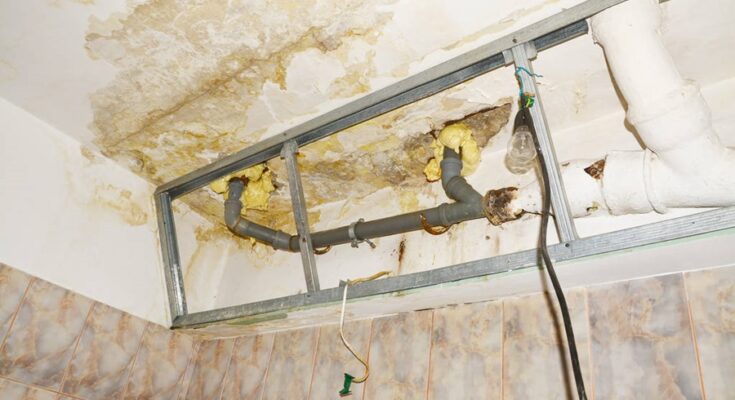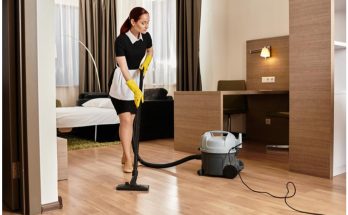Water damage can creep in slowly or happen suddenly causing destruction to your homes and businesses. From burst pipes to natural disasters, the implications of water damage may be severe leading to ruinous structural problems, growth of mildew and loss of personal possessions. Quick and efficient restoration is vital in order to reduce damages and protect our homes and businesses. Below are some of the most effective strategies for dealing with water damage.
- Immediate Response and Assessment
Swift Action: The first and most critical step in water damage restoration is to respond immediately. Leaving water sitting for too long can cause structural damage and mold growth in your building. Getting a professional restoration service within the first 24-48 hours can significantly reduce the extent of the damage.
Initial Assessment: A thorough assessment of the situation is a must. Restoration professionals will inspect the affected area to determine the source of the water, the extent of the damage, and the type of water involved (clean, gray, or black). This assessment helps in developing an effective water damage restoration plan.
- Water Extraction
Efficient Removal: After the assessment one has to pull out all the remaining standing water and this is the next process. In this process, machines such as industrial pumps and vacuums help quickly pump out water from the flooded areas. Superfast extraction of water is always very important to avoid worsening of the situation and fuzz formation.
Specialized Equipment: Wetness restoration specialists employ devices including submergible pumps and wet/dry vacuums to draining big volumes of water. For the small and localized areas, the use of portable extraction units is applied. Proper examination of fabric is necessary at this stage to extract as much water as possible before proceeding to drying.
- Drying and Dehumidification
Comprehensive Drying: After the extraction of the water, then the process of drying of the affected areas begins. This includes the employment of high powerful fans and dehumidifiers that help to suck the moisture from the air and surfaces. Drying is necessary not only in the case when there is still some water observed on the floor, on the walls, between the layers of the walls, on the floor and on the ceiling.
Monitoring Moisture Levels: Moisture meters and other modern infrared cameras that have been moved to the primary tools of restoration experts help to track moisture throughout the drying process. This makes certain that all the wetness has been cleared so as not to promote the development of molds in the future and also not to trigger structural compromise in the future.4. Cleaning and Sanitizing
Thorough Cleaning: Water damage often leads to contamination, especially if the water is from a potentially hazardous source. All affected surfaces must be cleaned and sanitized to ensure a safe environment. A potent cleaning solution should be used in the process. This includes cleaning walls, floors, and personal belongings. Click here for more information.
Disinfection: Disinfecting the area is crucial to eliminate bacteria, mold spores, and other pathogens that may be present. Restoration professionals use specialized cleaning agents or disinfectants and techniques to thoroughly disinfect the area.
Odor Removal: Water damage can also result in unpleasant odors. Deodorizing agents are used to remove any lingering smells, ensuring that the affected area is not only clean but also odor-free.
- Mold Prevention and Remediation
Mold Inspection: Mold can begin to grow within 24-48 hours of water exposure. A thorough inspection for mold is a critical part of the restoration process. Restoration professionals will check for visible mold and use tools like moisture meters to detect hidden mold.
Mold Remediation: If mold is detected, immediate remediation is necessary. This involves removing and disposing of mold-infested materials, cleaning and disinfecting surfaces, and using strong antifungal treatments to prevent future growth. Proper containment and ventilation are essential to prevent the spread of mold spores during remediation.
- Repair and Restoration
Structural Repairs: Water damage can weaken the structural integrity of a building. Restoration professionals assess structural damage and repair it if necessary. This may include replacing drywall, repairing flooring, repairing the ceiling and reinforcing weakened structures.
Cosmetic Restoration: Beyond structural repairs, cosmetic restoration is important to restore the affected area to its pre-damage condition. This involves repainting walls, replacing damaged furniture and fixtures, and restoring personal belongings.
- Documentation and Insurance Claims
Detailed Documentation: It is very important to document the extent of the damage with the intention of laying claims of the insurance. Catastrophe workers record the losses by taking photos, making videos, and writing obtained documentation. This documentation should be as precise as possible because it plays a vital role in the insurance claims processes and helps the homeowner to be compensated fairly.
Assistance with Claims: Insurance claims are always a daunting task at one point or another. Some of the companies deal with the restoration process source information on the policy of the homeowner, and they assist the homeowner in filing for the claims as per the policies provided.
- Preventive Measures
Identifying Vulnerabilities: After the restoration process, it is important to identify and address vulnerabilities that could lead to future water damage. This may involve inspecting and repairing plumbing systems, improving drainage, and sealing potential entry points for water.
Installing Preventive Systems: Implementing preventive measures, such as installing sump pumps, backwater valves, and water alarms, can help detect and prevent water damage in the future. Regular maintenance of these systems is also crucial to ensure their effectiveness.
- Educating Homeowners
Awareness and Education: Educating homeowners about the causes and prevention of water damage is an important aspect of restoration. Homeowners should be aware of signs of potential water damage, such as damp spots, musty odors, and peeling paint, and know how to respond quickly to minimize damage. Visit https://www.linkedin.com/understanding-water-damage-causes-consequences-victoriahygiene/ to read more about the causes and prevention of water damage.
Emergency Preparedness: When giving the homeowners emergency precautions, for instance offering the flood emergency check-list and the basic ways of safely switching off all sources of water, they will be ready to take appropriate action in case of future water damages.
Conclusion
Treatment of water damage is a sensitive activity that needs to be conducted as soon as possible and with proper techniques in order to avoid potential negative consequences for people who live in the building or for the building itself. Thus, having learned the guidelines that outline the top strategies that can help to control and mitigate water damage, including immediate response, safety measures, water removal, drying, and cleaning, mold control, property’s repairs and restoration documentation, constant monitoring and prevention, it is possible to note that water damage can be managed and restored. This process involves professional restoration services which add professionalism, tools, and experience towards the best results.




